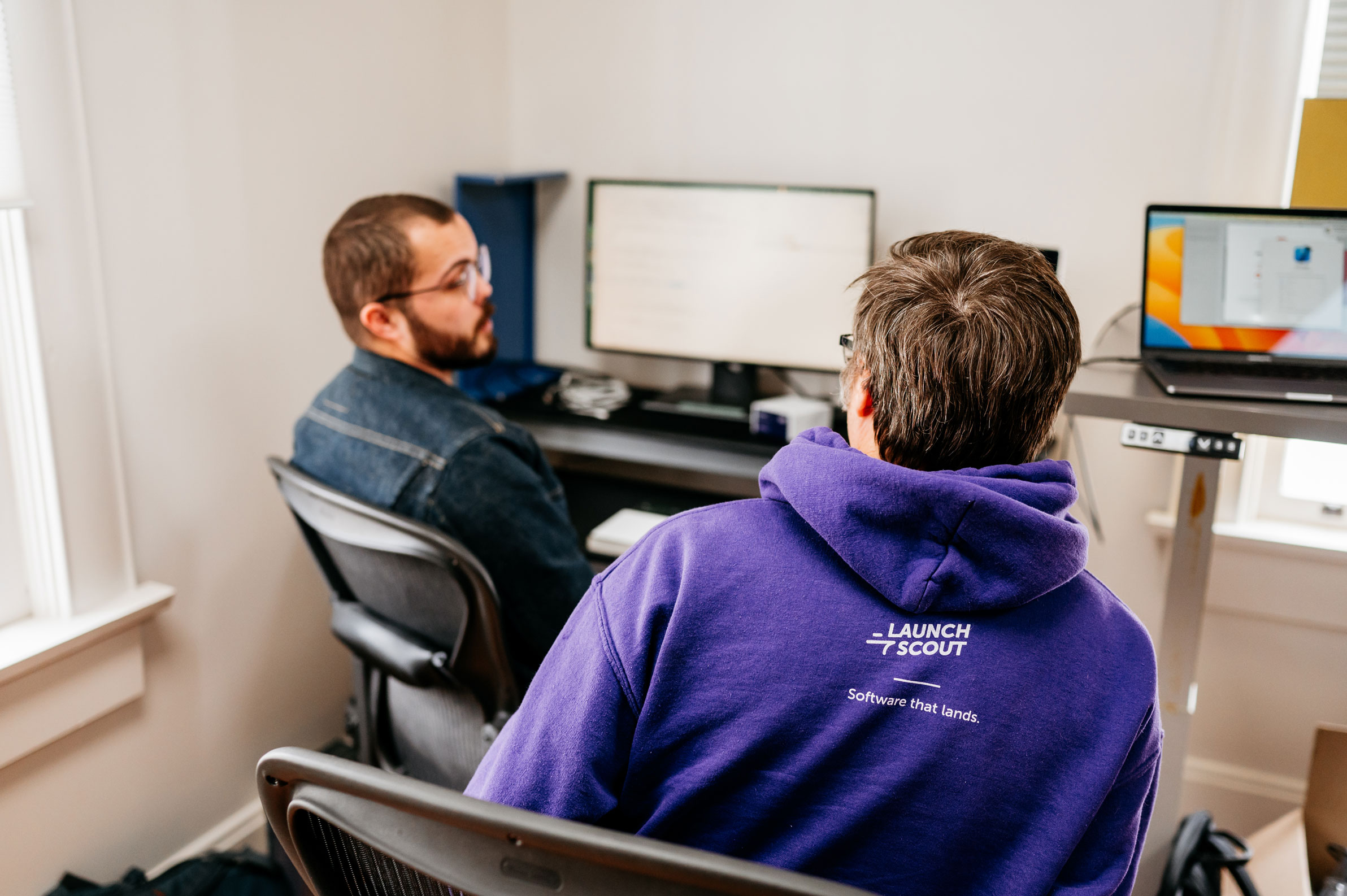.jpg)
24 March 2021
Women in Technology Leadership Summit Recap
Last month, I attended the Women in Technology Leadership Summit, a virtual international conference presented by ComSpark. I have attended a few virtual conferences in light of the last year, each one bringing its own spin on educating, inspiring, and connecting without being in person.
The day was jam-packed full of interesting discussions with a variety of successful, inspiring, and driven women. The host was generous enough to record and publish most of the sessions after the event, so dive in to learn more. Here are my favorite findings I’m bringing back with me:
People are dynamic; personas representing them should be too
Empathy mapping is an exercise our team often uses at the beginning of a project to create user personas. Sticky notes are scribbled on and put up on a wall that has been divided by painter’s tape, noting the things that the user is thinking, doing, feeling, and saying. We do this to help create a narrative that gives us the right lens through which to view the user’s experience through.
In the opening keynote “Emotionally Intelligent Solutions, Powered by AI” with Dr. Henna Karna, the audience was reminded of the nuances of user personas. Users are not static. Ironically, I think of the PDF that is often the output from generating those personas, and how static the content ends up feeling. Dr. Karna talked about how a person is going to have different characteristics when they are thinking about buying vs. when they are actually buying. She emphasized how important it is to make dynamic user profiles. They let clients accommodate people who are using their product or service as close to their needs in their given state of the process. Those states will vary throughout the entirety of their interactions.
Knowing what we do about our customers, and thinking about their different needs at different times, translates well to working with clients or internally within a company. In “The Paradox of Value” session with Angela N. Lopez, she starts off with a few familiar contradicting paradoxes such as “less is more,” and “spend more to save more.” While we know that those statements are inherently false, we believe them because of the way that it is presented to us, and how it applies in context. As designers, we can give users and clients the right information throughout an experience to help them make informed decisions in which they understand the value.
Try thinking of clients, stakeholders, and teams as users. They are all in different parts of their own “buying process” as they work together. Angela mentions just because one person is excited about a solution, doesn’t mean that it will be accepted. By understanding the dynamic nature of each person, from user to stakeholder, we can better foster ideas from concept to fruition.
Economic changes to customer behaviors: the buyer phases of Covid-19
There are some external influences that no one has any control over. The nature of 2020 really accelerated the “buy now, pay later” space. In the “Covid-19 Has Accelerated Digital Transformation” session, Melissa Thome from Klarna shared some interesting and relatable information about the behavior they observed in customer spending habits over the last year.
There were four phases that she observed in 2020, starting with the “Stock up” phase. They saw a 225% increase in Klarna purchases for groceries (is anyone else having paper goods shortage flashbacks?) Next, there was the “Settle in” phase, where people realized that they couldn’t go do their regular social activities, correlating with a 180% increase in video game purchases. Taking a more active approach, buyers moved into the “Let’s do something” phase where they saw huge increases in sporting goods, and a 105% increase in running shoes alone. Each panelist mentioned the specific item in this category that they couldn’t get ahold of during this phase, so consider yourself lucky if you got a hold of weights, bikes, or rollerblades. The final phase was the “Stimulus” phase, in which the most notable change was an increase from buyers in the 66–75 age group.
These changes in purchasing emphasize the truly dynamic nature of personas and how quickly digital transformation can happen within different categories of goods or demographics of users.
Involve the right people in decision making
Internally, our team members at Gaslight are not fans of “the big reveal.” I am pretty confident in saying that 99% of the time that internal information has been released in that way, it has fallen flat and revealed some of our internal blindspots. We have learned two things from that: we waited too long, and we didn’t have the right (or enough) people in the room to make decisions.
During the “From Start-Up to Success… to Start-Up” keynote, Janice Degarmo quoted the known phrase “People support what they help create.” This seems obvious, but it is also easy to postpone sharing work in progress or asking for input. At the U.S. Department of State, there are a lot of specialized teams all working on different pieces that affect and depend on each other. But, those specialized teams didn’t work together. It was a cumbersome process to adopt new things collectively. She took members from different verticals and put them on a team to do a sprint together. They completed and presented a business plan to stakeholders in 45 days, moving much faster than they had been before. By bringing the right people together (and defining “right” may be different than who is currently in the room,) an organization can accelerate a process and elevate the outcome.
Virtual speed networking might be better than “regular” networking
There are two different, and opposite, ways that you can take this, but they both apply. The platform for the event used Hopin, an event technology platform for virtual and hybrid events. I typically eye-roll at each new one-off application I have to adopt, but this one was pretty painless. Enjoyable, even.
In the networking section of this virtual event, attendees could go and basically play “networking roulette.” Once you were ready, you were randomly paired with someone else who was available for speed networking. There was a 5-minute cap to the conversation, which automatically disconnected both users when the time was up. There was an option to extend the session, but both users had to request it in order for it to stay connected.
Here is why this is a win/win.
- There is a predetermined beginning and end to your conversation. No need to find your eloquent exit excuse if you feel trapped in the conversation. Thank you, next!
- On the flip side, you could think of it as a competitive sport where you are meeting as many people as you can at an event, where you can actually hear them and it is socially acceptable to take notes during the conversation.
- It is an amazing practice for making brief small talk and moving quickly into meaningful conversation. My first conversation felt awkward; I was amped by the end.
- I talked to someone who was on the other side of the world. While sitting at home in Cincinnati, Ohio, I was fortunate to meet and talk with a woman who was sitting in her home at 11:00 p.m. in Finland(!). We talked about the event, work, our kids, and Covid life (we extended our time).
The last year has been challenging but has highlighted how fortunate we are to be able to collaborate virtually. I am thankful to the event organizers for putting the event together, promoting it around the world, and for having free registration for anyone with a passion for tech and innovation.
And, although our virtual Friday Coffee doesn’t have a 5-minute timer, it is still a great place to gather and hear what other people have learned in their lives recently. Its attendees are mostly greater Cincinnati residents, but it seems like we’ll be branching out to enjoy our first cup of coffee with someone else’s 2:00 PM cup of coffee.



